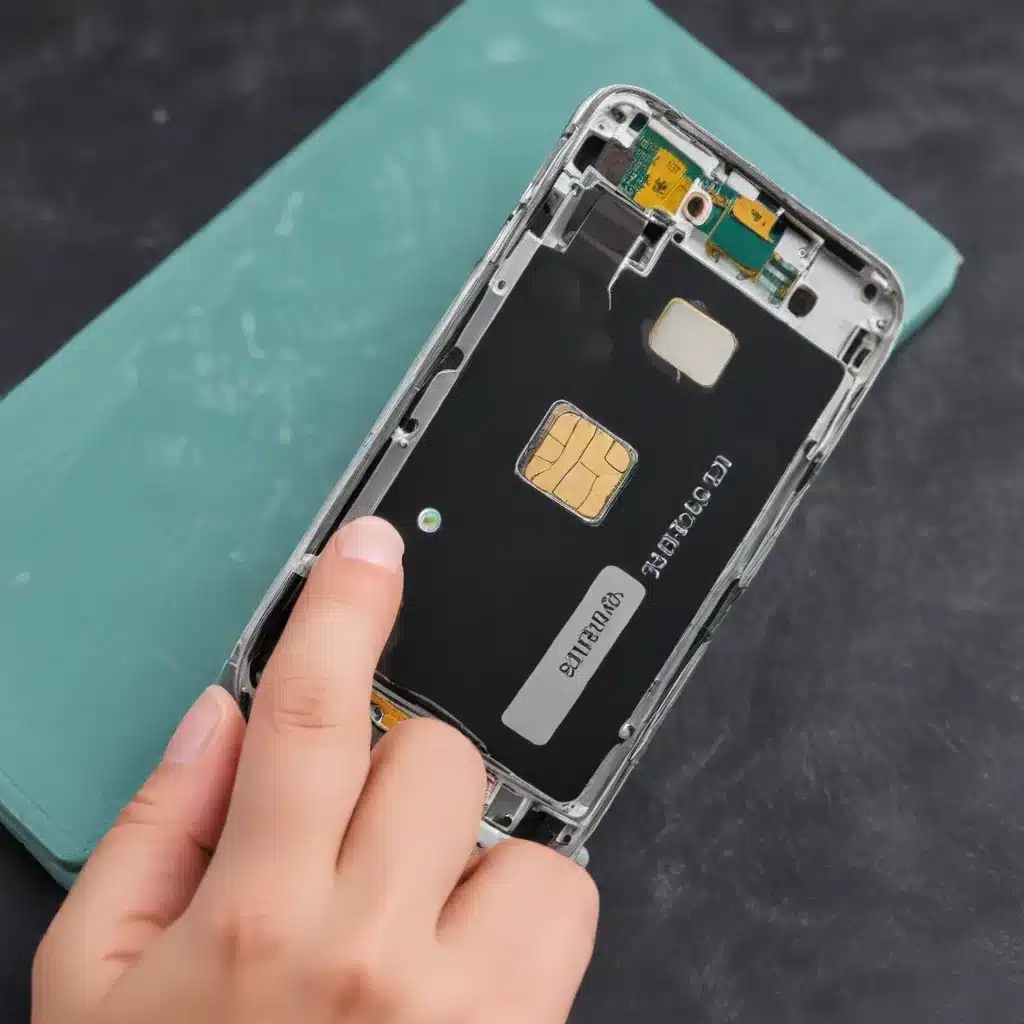
As a seasoned IT professional, I’ve had my fair share of experiences with smartphone repair and troubleshooting. One common issue that often stumps users is a malfunctioning SIM card slot. Whether it’s an Android device or an iPhone, a broken SIM card slot can be a frustrating problem that can severely impact your device’s functionality. In this comprehensive guide, we’ll explore the various causes of SIM card slot failures, provide practical troubleshooting steps, and offer insights on how to effectively repair this critical component.
Understanding the SIM Card Slot and Its Importance
The SIM (Subscriber Identity Module) card slot is a crucial component of any modern smartphone, as it allows the device to connect to a cellular network and receive cellular services. When the SIM card slot is not functioning correctly, your smartphone may be unable to detect or read the SIM card, effectively rendering it useless for cellular communication.
Common Causes of SIM Card Slot Failure
There are several reasons why a SIM card slot may stop working, and it’s essential to identify the root cause to find the most appropriate solution. Some of the most common causes include:
1. Physical Damage
The SIM card slot can be susceptible to physical damage, especially if the smartphone has been dropped or subjected to excessive force. This can result in the slot becoming misaligned, bent, or even cracked, preventing the SIM card from being properly inserted and recognized.
2. Dirt and Debris Buildup
Over time, the SIM card slot can accumulate dust, lint, or other debris, which can interfere with the electrical contacts and prevent the SIM card from making a proper connection.
3. Software or Firmware Issues
In some cases, software or firmware updates can introduce bugs or compatibility issues that may cause the SIM card slot to malfunction, even if the hardware itself is still in good condition.
4. Liquid Damage
Exposure to liquid, such as water or other fluids, can corrode the internal components of the SIM card slot, leading to permanent damage and failure.
Troubleshooting Steps
Before attempting any repairs, it’s essential to try a few troubleshooting steps to identify the root cause of the problem. Here are some steps you can take:
1. Clean the SIM Card Slot
Using a soft, dry toothbrush or a SIM card ejection tool, gently clean the SIM card slot to remove any accumulated dirt or debris. Avoid using sharp objects or excessive force, as this could further damage the slot.
2. Check the SIM Card
Ensure that the SIM card is not damaged, bent, or malfunctioning. Try inserting the SIM card into a different device to verify its functionality.
3. Perform a Network Reset
In some cases, a network reset may help resolve software or firmware-related issues that are causing the SIM card slot to malfunction. Refer to your device’s user manual for the specific steps to perform a network reset.
4. Check for Hardware Damage
If the above troubleshooting steps do not resolve the issue, the problem may be due to physical damage to the SIM card slot. In this case, you’ll need to explore repair options.
Repairing a Broken SIM Card Slot
If the troubleshooting steps do not resolve the issue, and the SIM card slot appears to be physically damaged, you’ll need to consider repairing or replacing the component. Here are some options to explore:
1. Seek Professional Repair Services
If you’re not comfortable attempting a DIY repair, you can take your device to a professional repair service, such as an authorized service center or a reputable third-party repair shop. These specialists have the necessary tools and expertise to diagnose and repair the SIM card slot effectively.
2. DIY Repair
For more technically inclined users, it may be possible to attempt a DIY repair on the SIM card slot. This typically involves disassembling the device, identifying the specific component that needs to be repaired or replaced, and carefully performing the necessary steps. However, this approach should only be attempted by experienced users, as improper handling can further damage the device.
3. SIM Card Slot Replacement
In some cases, the only viable solution may be to replace the entire SIM card slot. This can be a more complex and time-consuming process, as it often requires specialized tools and expertise. If you’re not comfortable with this level of repair, it’s best to seek professional assistance.
Preventive Measures to Avoid SIM Card Slot Failure
To minimize the risk of experiencing a malfunctioning SIM card slot, it’s essential to take proactive steps to protect your device:
-
Use a Protective Case: Invest in a high-quality protective case for your smartphone to help absorb the impact of drops and minimize the risk of physical damage to the SIM card slot.
-
Avoid Excessive Force: Be gentle when inserting and removing the SIM card, and never force it into the slot if it doesn’t slide in smoothly.
-
Keep the Slot Clean: Regularly clean the SIM card slot using a soft, dry brush or a compressed air duster to prevent the buildup of debris.
-
Upgrade Responsibly: When updating your smartphone’s software or firmware, be cautious and consider waiting for any potential issues to be addressed by the manufacturer before proceeding.
By following these preventive measures and being proactive in addressing any SIM card slot issues, you can help extend the life and functionality of your smartphone.
Remember, the team at IT Fix is always here to provide expert guidance and support for all your smartphone repair and troubleshooting needs. Don’t hesitate to reach out if you require further assistance.












